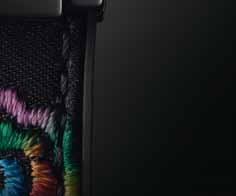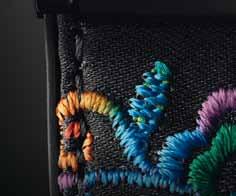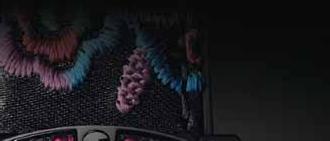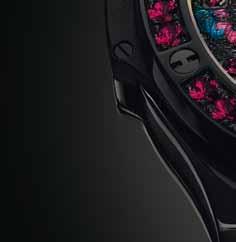
7 minute read
COVID- 19: How Much Protection Do Face Masks Offer
ealth H
COVID- 19: How Much Protection Do Face Masks Offer?
Face Masks Combined with Other Preventive Measures Help Slow the Spread of the Disease
by Mayo Clinic
Can face masks help prevent the spread of coronavirus disease 2019 (COVID-19)? Yes, face masks combined with other preventive measures, such as frequent hand-washing and social distancing, help slow the spread of the disease.
So why weren›t face masks recommended at the start of the pandemic? At that time, experts didn›t yet know the extent to which people with COVID-19 could spread the virus before
Tourists wearing protective facemasks visit the Piazza San Marco, in Venice, on February 2020 ,24. (Getty)
symptoms appeared. Nor was it known that some people have COVID-19 but don›t have any symptoms. Both groups can unknowingly spread the virus to others.
These discoveries led the Centers for Disease Control and Prevention (CDC) to do an about-face on face masks. The CDC updated its guidance to recommend widespread use of simple cloth face coverings to help prevent transmission of COVID-19 by people who have the virus but don›t know it.
Some public health groups argue that masks should be reserved for health care providers and point to the critical shortage of surgical masks and N95 masks. The CDC acknowledged this concern when it recommended cloth masks for the public and not the surgical and N95 masks needed by health care providers.
How do the different types of masks work?
Surgical masks: Also called a medical mask, a surgical mask is a loose-fitting disposable mask that protects the wearer›s nose and mouth from contact with droplets, splashes and sprays that may contain germs. A surgical mask also filters out large particles in the air. Surgical masks may protect others by reducing exposure to the saliva and respiratory secretions of the mask wearer.
At this time, the Food and Drug Administration has not approved any type of surgical mask specifically for protection against the COVID-19 virus, but these masks may provide some protection when N95 masks are not available.
N95 masks: Actually a type of respirator, an N95 mask offers more protection than a surgical mask does because it can filter out both large and small particles. The name indicates that the mask is designed to block 95% of very small particles. Like surgical masks, N95 masks are intended to be disposable. However, researchers are testing ways to disinfect N95 masks so they can be reused.
Cloth masks: While surgical and N95 masks are in short supply, cloth masks are more accessible and reusable. Although cloth masks and N95 masks have different purposes, both are intended to slow the spread of COVID-19. A cloth mask is worn to help protect others in case the wearer has the virus. An N95 mask helps protect the wearer from getting the virus from others.
Countries that required face masks, testing, isolation and social distancing early in the pandemic seem to have had some success slowing the disease›s spread. Common sense also suggests that some protection is better than none. But wearing
a cloth face mask will lose any value unless it›s combined with frequent hand-washing and social distancing.
Cloth masks are cheap and simple to make. Instructions are easy to find online. Masks can be made from common materials, such as sheets made of tightly woven cotton. The CDC website offers directions for no-sew masks made from bandannas and T-shirts. Cloth masks should include multiple layers of fabric.
How to wear a cloth face mask Cloth face masks should be worn in public settings where social distancing measures are difficult to maintain, such as in grocery stores, especially in areas of significant communitybased transmission.
Here are a few pointers for putting on and taking off a cloth mask:
Place your mask over your mouth and nose. Tie it behind your head or use ear loops and make sure it›s snug. Don›t touch your mask while wearing it. If you accidentally touch your mask, wash or sanitize your hands.
Remove the mask by untying it or lifting off the ear loops without touching the front of the mask or your face. Wash your hands immediately after removing your mask.
Regularly wash your mask with soap and water in the washing machine. It›s fine to launder it with other clothes.
Finally, here are a few face mask precautions:
Don›t put masks on anyone who has trouble breathing, or is unconscious or otherwise unable to remove the mask without help. Don›t put masks on children under 2 years of age. Don›t use face masks as a substitute for social distancing.
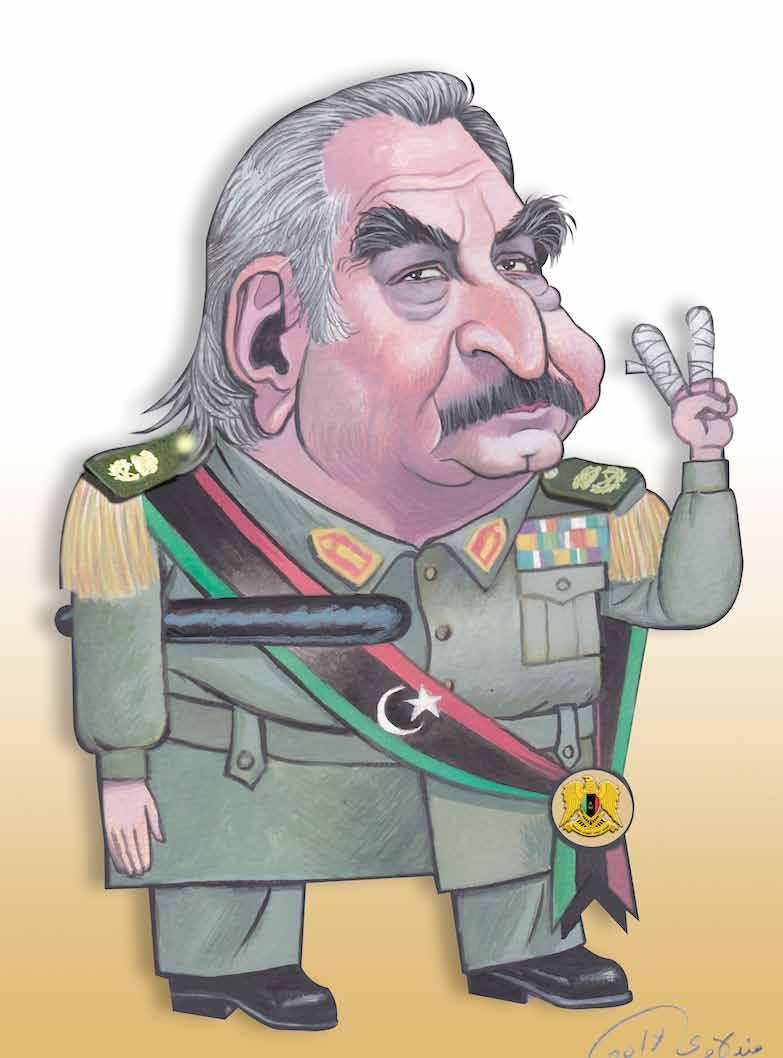
Po rt
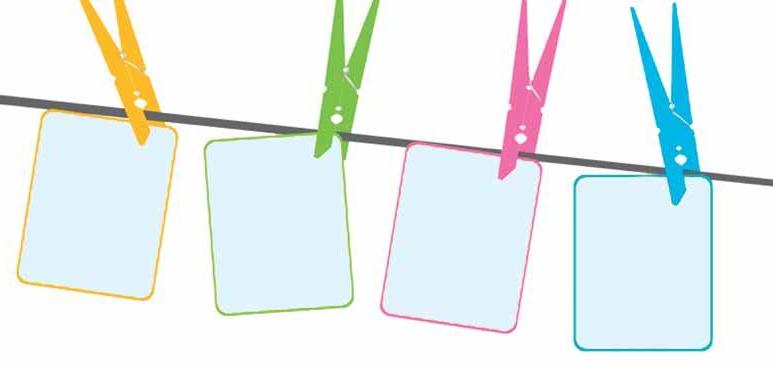
ra it
Khalifa Haftar: The Libyan General in a Battle for Control of the Capital
Majalla - London
Born in 1943 in Tarhouna, Libya, Haftar was one of the group of officers led by Col Muammar Gaddafi which seized power from King Idris in 1969. He took part in the Libyan contingent against Israel in the Yom Kippur War of 1973. Gaddafi put Haftar - recently promoted to field marshal - in charge of the Libyan forces involved in the conflict in Chad in the 1980s. In 1987, he became a prisoner of war along with 300 of his men after being lulled into a trap and captured, then a major embarrassment for Gaddafi and represented a major blow to Gaddafi›s ambitions in Chad. Having previously denied the presence of Libyan troops in the country, Gaddafi disowned him. This led Haftar and his fellow officers to form a group hoping to overthrow Gaddafi.
He was released around 1990 in a deal with the United States government and spent nearly two decades living in exile in the US state of Virginia, gaining U.S. citizenship. Haftar lived comfortably in Virginia, relatively close to CIA headquarters, from the early 1990s until 2011. In 1993, he was convicted in absentia of crimes against the Jamahiriya and sentenced to death. He then moved to Vienna, Virginia. From there, and mostly through his close contacts within the DIA / CIA, he consistently supported several attempts to topple and assassinate Gaddafi.
After the start of the uprising against Gaddafi in 2011, Haftar returned to Libya, where he became a key commander of the makeshift rebel force in the east. Following Gaddafi›s downfall and death, Haftar faded into obscurity until February 2014, when he became commander of the Libyan Army when the General National Congress (GNC) refused to give up power in accordance with its term of office. In May, Haftar launched Operation Dignity against Islamist militants in Benghazi and the east. In March 2015 Libya›s elected parliament, the House of Representatives (HoR) - which had replaced the GNC - appointed him commander of the LNA. Haftar rejected the United Nationsbacked transitional Government of National Accord (GNA) set up in Tripoli in 2016, dismissing it as beholden to militias in the capital. The Libyan armed forces split into the LNA under Haftar›s control and the Libyan Army controlled by the GNA. televised speech that his forces had finally taken full control of Benghazi, the second largest Libyan city. Haftar›s military victory has been regarded by many as the expression of his growing military and political ambitions.
During the summer of 2018, rumors spread about Haftar’s poor health. The French Minister of Foreign Affairs stated that Haftar was in stable condition after he was admitted to a French military hospital. Haftar recovered very quickly from what seemed to have been a stroke.
By April 2019, Haftar’s troops succeeded in conquering most of the Libyan littoral and had reached the outskirts of the capital Tripoli. On 4 April 2019, Haftar called on his military forces to advance on Tripoli. A year later, the LNA said that it was pulling back from all Tripoli front lines after the GNA took a string of small towns linking Tripoli to the Tunisian border. It also took alWatiya, the LNA›s only airbase near Tripoli and a significant strategic prize, and small towns to the southwest. The eastern forces› setbacks underscored the shifting dynamics of the conflict since Turkey intensified its intervention in January, to help the GNA save off Haftar’s offensive.



